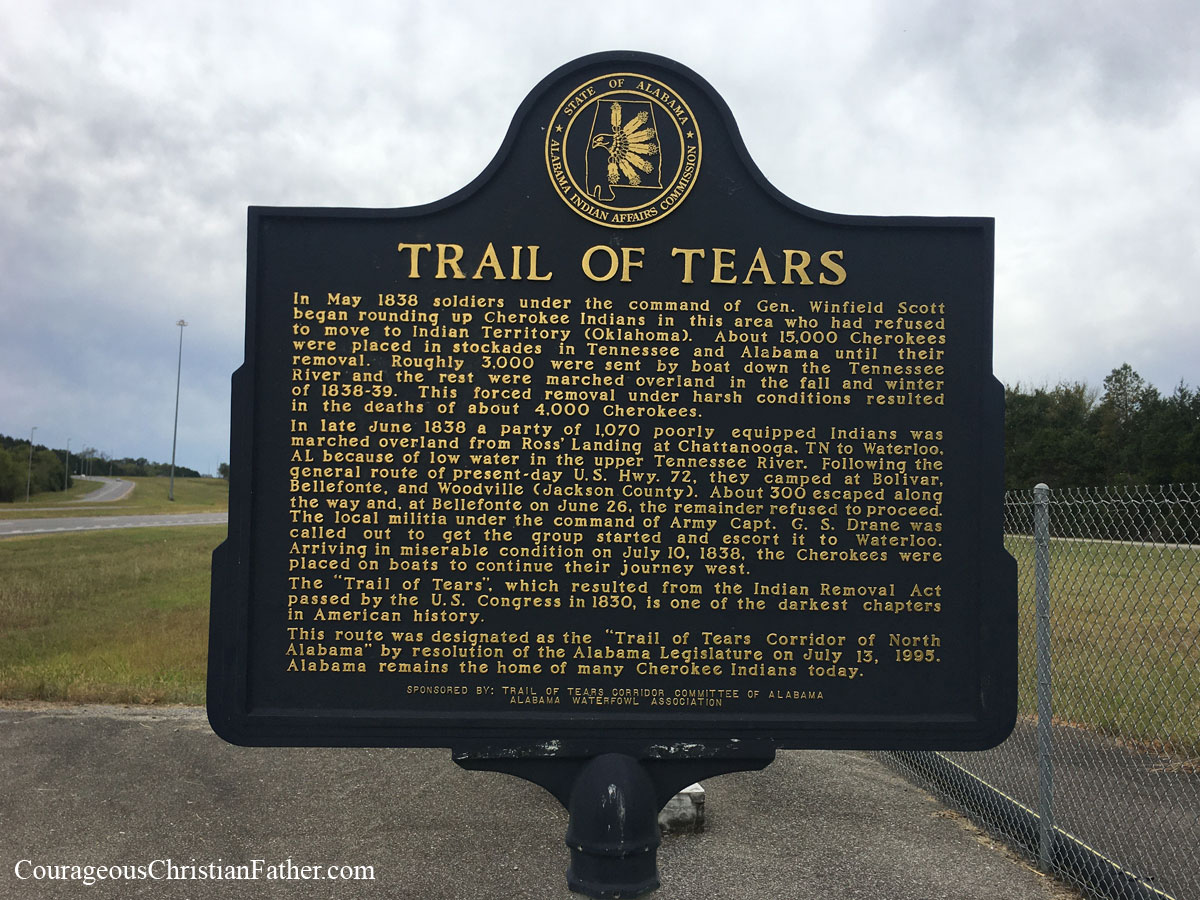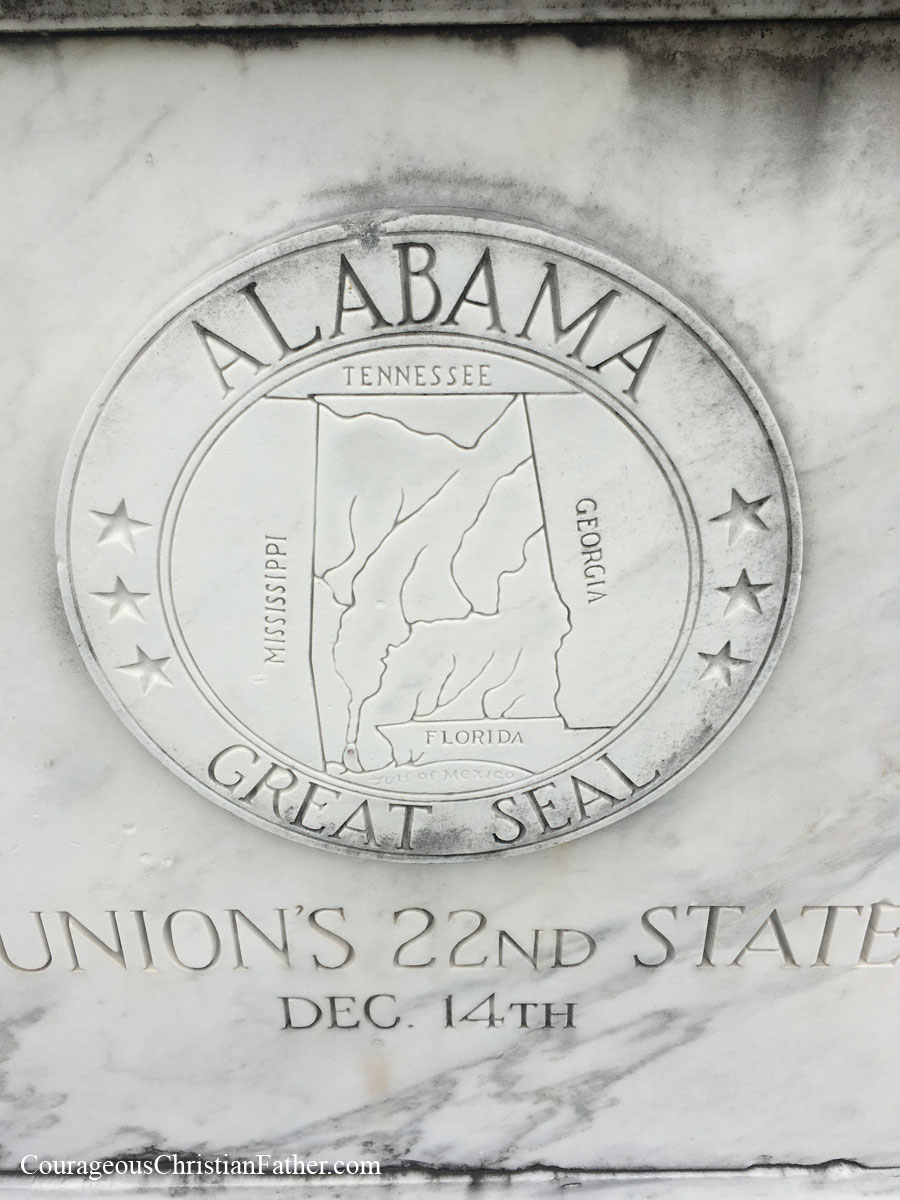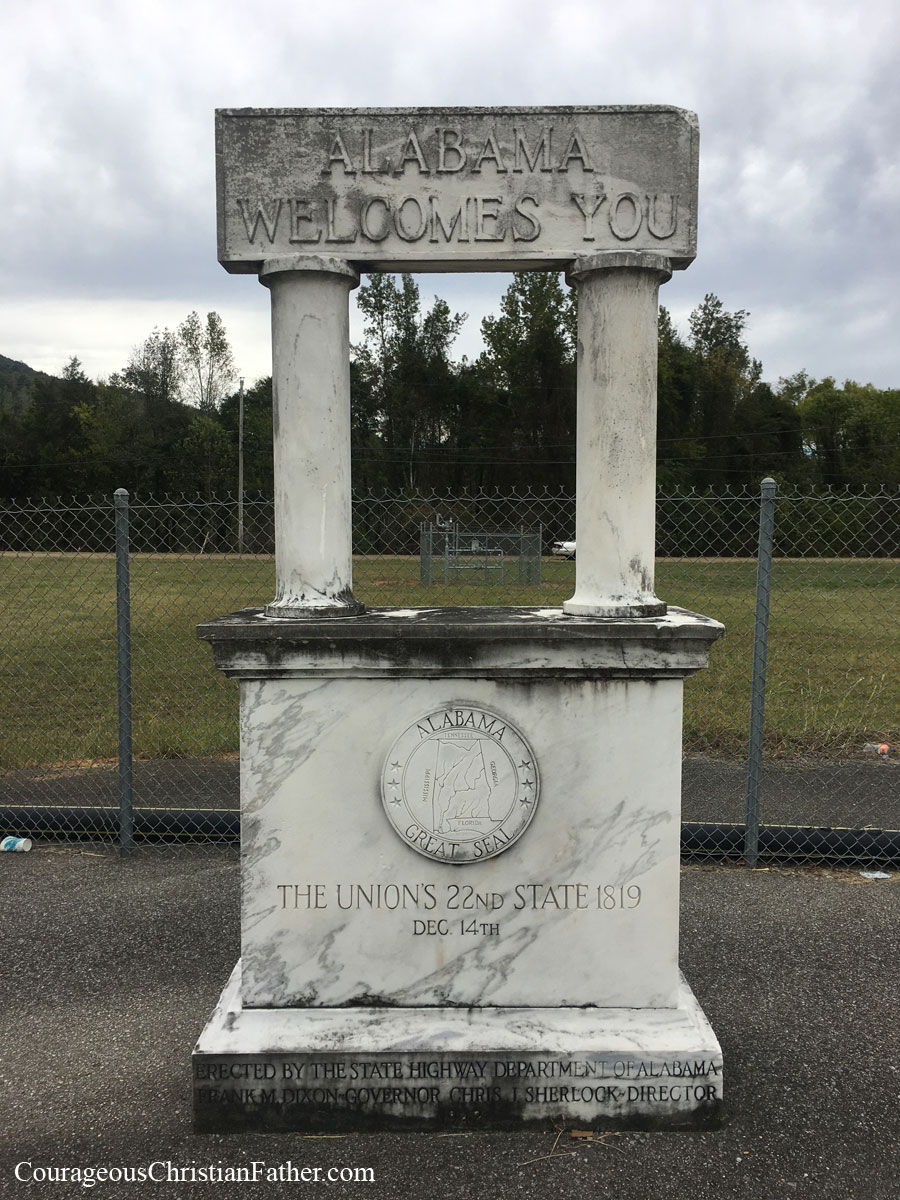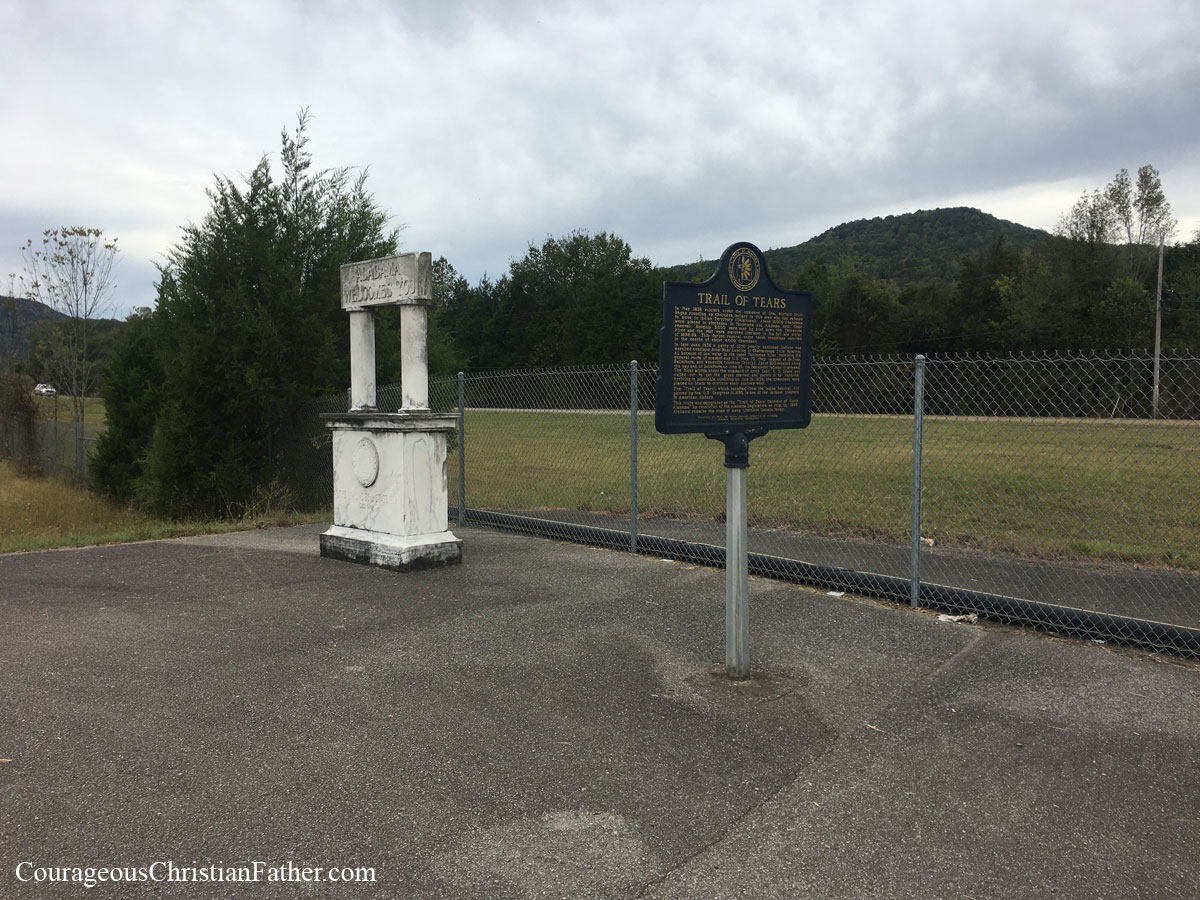Trail of Tears State Marker – Alabama – This will be this week’s Travel Thursday feature is near Bridgeport, AL. #TrailofTears

Trail of Tears – In May 1838 soldiers under the command of Gen. Winfield Scott began rounding up Cherokee Indians in this area who had refused to move to Indian Territory (Oklahoma). About 15,000 Cherokees were placed in stockades in Tennessee and Alabama until their removal. Roughly 3,000 were sent by boat down the Tennessee River and the rest were marched overland in the fall and winter of 1838-39. This forced removal under harsh conditions resulted in the deaths of about 4,000 Cherokees.
Alabama State Marker
In late June 1838 a part of 1,070 poorly equipped Indians was marched overland from Ross Landing at Chattanooga, TN to Waterloo, AL because of low water. In the upper Tennessee River. Following the general route of present day U.S. Hwy 72, they camped at Bollvar, Bellefonte and Woodville (Jackson County). About 300 escaped along the way and at Bellefonte on June 26, the remained refused to proceed. The local militia under the command of Army Capt. G. S. Drane was called out to get the group started and escort it to Waterloo. Arriving in miserable condition on July 10, 1838, the Cherokees were placed on boats to continue their journey west.
The “Trail of Tears,” which resulted from the Indian Removal Act passed by the U.S. Congress in 1830, is one of the darkest chapters in American history.
This route is designated as the “Trail of Tears Corridor of North Alabama” by resolution of the Alabama Legislature on July 13, 1995. Alabama remains home to many Cherokee Indians today.
Also, on this same spot is an Alabama Monument for being the 22nd State to join the Union.
About the Author
Discover more from Courageous Christian Father
Subscribe to get the latest posts sent to your email.






Thank you for reminding us of places we were and need to continue to rise from.
You are welcome. It was awesome too but it is easy to miss seeing this. Sad to see state markets like these almost running down and not thriving for more visits and upkeep.